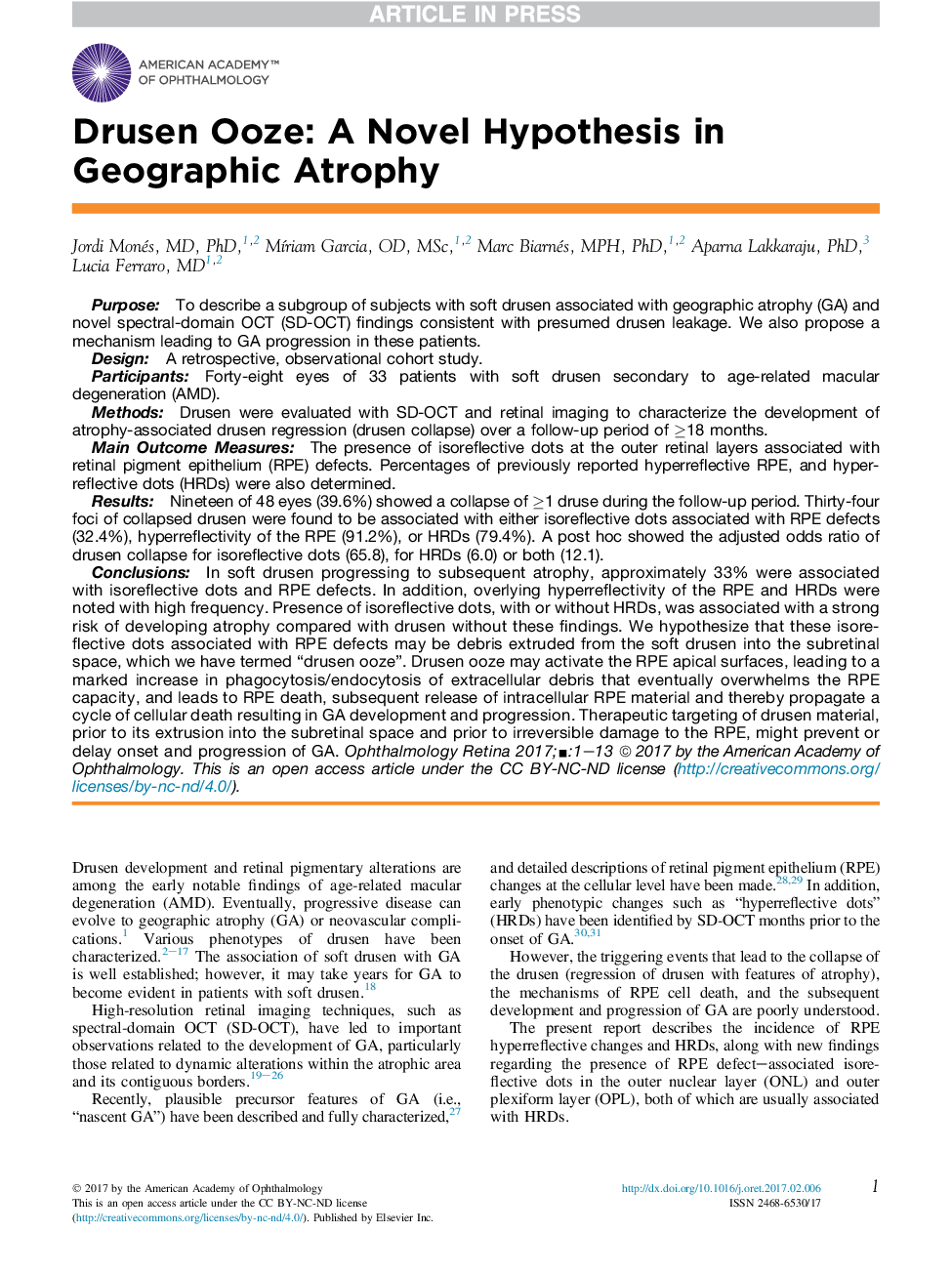| Article ID | Journal | Published Year | Pages | File Type |
|---|---|---|---|---|
| 8794750 | Ophthalmology Retina | 2017 | 13 Pages |
Abstract
In soft drusen progressing to subsequent atrophy, approximately 33% were associated with isoreflective dots and RPE defects. In addition, overlying hyperreflectivity of the RPE and HRDs were noted with high frequency. Presence of isoreflective dots, with or without HRDs, was associated with a strong risk of developing atrophy compared with drusen without these findings. We hypothesize that these isoreflective dots associated with RPE defects may be debris extruded from the soft drusen into the subretinal space, which we have termed “drusen ooze”. Drusen ooze may activate the RPE apical surfaces, leading to a marked increase in phagocytosis/endocytosis of extracellular debris that eventually overwhelms the RPE capacity, and leads to RPE death, subsequent release of intracellular RPE material and thereby propagate a cycle of cellular death resulting in GA development and progression. Therapeutic targeting of drusen material, prior to its extrusion into the subretinal space and prior to irreversible damage to the RPE, might prevent or delay onset and progression of GA.
Keywords
Related Topics
Health Sciences
Medicine and Dentistry
Ophthalmology
Authors
Jordi MD, PhD, MÃriam OD, MSc, Marc MPH, PhD, Aparna PhD, Lucia MD,
